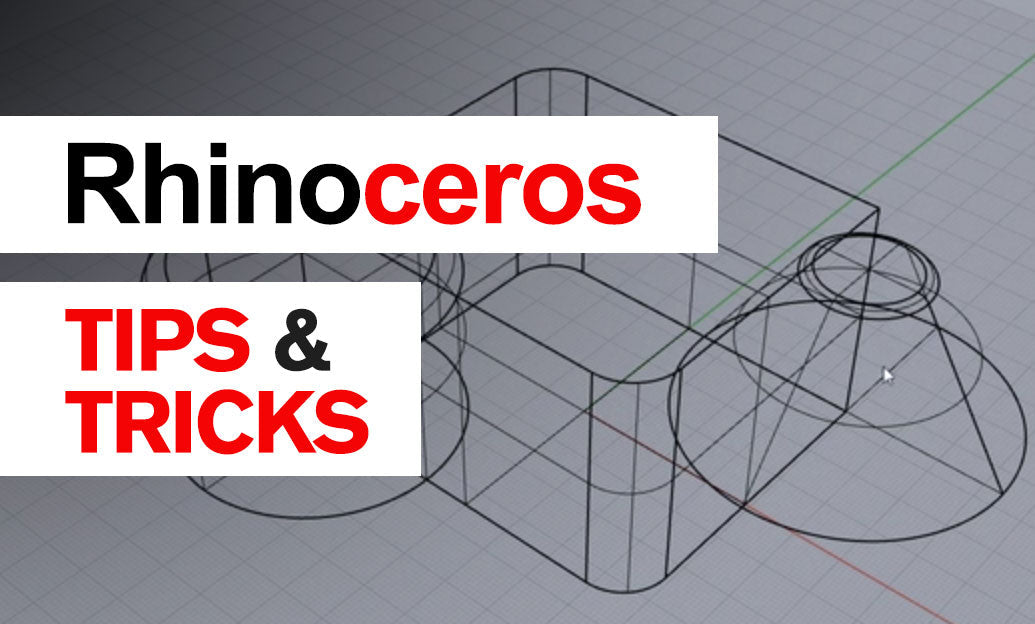Your Cart is Empty
Customer Testimonials
-
"Great customer service. The folks at Novedge were super helpful in navigating a somewhat complicated order including software upgrades and serial numbers in various stages of inactivity. They were friendly and helpful throughout the process.."
Ruben Ruckmark
"Quick & very helpful. We have been using Novedge for years and are very happy with their quick service when we need to make a purchase and excellent support resolving any issues."
Will Woodson
"Scott is the best. He reminds me about subscriptions dates, guides me in the correct direction for updates. He always responds promptly to me. He is literally the reason I continue to work with Novedge and will do so in the future."
Edward Mchugh
"Calvin Lok is “the man”. After my purchase of Sketchup 2021, he called me and provided step-by-step instructions to ease me through difficulties I was having with the setup of my new software."
Mike Borzage
Rhino 3D Tip: Mastering Rhino Views and Viewports for Enhanced 3D Model Presentations
June 22, 2024 2 min read

Welcome to our tip of the day, focused on mastering views and viewports in Rhino for better presentations. If you're looking to enhance the way you showcase your 3D models, understanding how to manipulate views and viewports is crucial. Let's dive into some essential tips:
- Named Views: Save specific angles or perspectives of your model using the "Named Views" panel. This allows you to quickly return to a particular view, ensuring consistency during presentations or while exporting images.
- Layouts: Use Rhino's "Layout" feature to compose printable sheets. You can arrange different viewports, each with their own scale and detail, perfect for technical documentation or client handouts. More information can be found at NOVEDGE.
- Maximize Detail: Double-click on a viewport's title to maximize it, giving you a focused environment to fine-tune your view. A second double-click will return the viewport to its original size within the workspace.
- Viewport Settings: Right-click on a viewport title to access its settings. Here you can adjust the display mode (such as wireframe, shaded, or rendered), as well as toggle grid visibility and camera lens length to affect perspective.
- Clipping Planes: Use clipping planes to create sectional views of your model. This can highlight internal features during a presentation and is especially valuable for architectural or product design reviews.
- Floating Viewports: Create additional floating viewports by going to the "Viewport" menu and selecting "New Floating Viewport." This is useful for monitoring multiple perspectives simultaneously, particularly on multi-monitor setups.
- Display Modes: Customize and save unique display modes that can enhance your visual presentation. They can be accessed under "Options" > "View" > "Display Modes." Experiment with settings like ambient occlusion or shadows to make your model pop.
- Set Camera: Use the "SetCamera" command to place the camera precisely or to match a camera angle from a photograph or another software. This can be critical when comparing designs or integrating your model into existing environments.
- Background and Lighting: Customize the viewport background color, or add custom lighting to improve the clarity and aesthetic of your presentation. For Rhino's lighting options, visit NOVEDGE.
- Animations: Use the "Bongo" plugin for Rhino to create animations that can walk a viewer through different aspects of your model. Animated presentations can be an impactful way to demonstrate functionality and design intent.
By mastering these tools and techniques within Rhino, you can vastly improve the way you communicate your designs. Keep exploring and refining your use of views and viewports for more compelling and effective presentations.
```You can find all the Rhino products on the NOVEDGE web site at this page.
Also in Design News

Revit Tip: Revit Plotting Best Practices: Standardize Line Weights and Print Setups
January 13, 2026 2 min read
Read More
V-Ray Tip: V-Ray Sun and Sky Workflow for Accurate Seasonal Lighting
January 13, 2026 2 min read
Read MoreSubscribe
Sign up to get the latest on sales, new releases and more …



